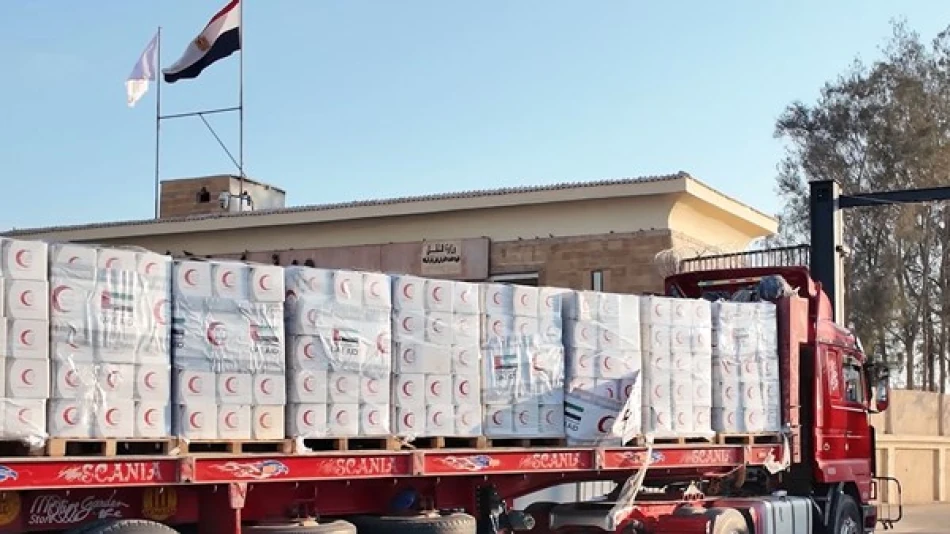
Emirati Aid Convoy of 128 Trucks Enters Gaza Through Rafah Crossing in Past Fortnight
UAE Escalates Gaza Relief Efforts as Humanitarian Crisis Deepens
The United Arab Emirates has significantly ramped up its humanitarian assistance to Gaza, delivering over 2,000 tons of aid through eight convoys in just two weeks via Egypt's Rafah crossing. This surge in relief operations, part of the UAE's "Noble Knight 3" humanitarian initiative, brings the total aid delivered since border reopening to more than 12,000 tons, positioning the Emirates as a key player in regional crisis response.
Massive Logistical Operation Underway
The recent aid delivery involved 128 trucks carrying essential supplies including food and shelter materials. UAE humanitarian teams stationed in Egypt's Al-Arish city are coordinating the complex logistics, overseeing precise loading operations and monitoring the delivery process through the Rafah crossing to ensure supplies reach intended recipients in Gaza.
Since the border crossings reopened on July 27, the UAE has dramatically intensified its relief operations, reflecting both the severity of Gaza's humanitarian situation and the Emirates' strategic commitment to regional stability through soft power projection.
Strategic Humanitarian Diplomacy in Action
Regional Leadership Through Crisis Response
The UAE's approach mirrors its broader foreign policy strategy of using humanitarian aid as a tool for regional influence and diplomatic positioning. Similar to its responses during crises in Yemen, Syria, and Lebanon, the Emirates is leveraging its logistical capabilities and financial resources to establish itself as an indispensable humanitarian actor in the Middle East.
Comparison with International Relief Efforts
While traditional donors like the United States and European Union often face bureaucratic delays and political complications in delivering aid to Gaza, the UAE's direct coordination with Egypt demonstrates the advantages of regional partnerships. This approach allows for more rapid deployment compared to multilateral aid mechanisms that require extensive vetting processes.
Economic and Political Implications
The substantial aid commitment represents more than humanitarian goodwill—it's a calculated investment in regional stability that protects UAE's broader economic interests. As a major trade and tourism hub, the Emirates benefits from reduced regional tensions that could otherwise disrupt business confidence and investment flows.
The timing and scale of the aid also position the UAE favorably in potential future diplomatic negotiations, creating goodwill that could prove valuable in broader Middle East peace processes or normalization discussions.
Operational Challenges and Sustainability
Despite the impressive logistics, questions remain about long-term sustainability and effectiveness. The UAE's ability to maintain this level of assistance depends on continued Egyptian cooperation and stable access through Rafah crossing. Previous border closures have repeatedly disrupted aid flows, highlighting the vulnerability of current delivery mechanisms.
The UAE's humanitarian surge in Gaza represents a sophisticated blend of genuine relief efforts and strategic positioning, demonstrating how middle powers can leverage crisis response to enhance regional influence while addressing urgent human needs.
Most Viewed News

 Layla Al Mansoori
Layla Al Mansoori






